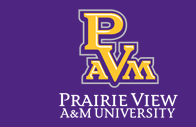Roles of hCG in advancing follicular growth to ovulation after concurrent injections of PGF 2 and GnRH in postpubertal holstein heifers bearing a CL
Abstract
A study was conducted to test the hypothesis that injecting Gonadotropin-releasing hormone (GnRH) concurrently with Prostaglandin F2 alpha (PGF2) followed by an injection of human Chorionic Gonadotropin (hCG), would advance follicular growth to ovulation in Holstein heifers bearing a corpus luteum (CL). After manual examination of the CL, group 1 (PGF; n=12) received an injection of PGF2 (25mg, im). Group 2 (PGF + GnRH; n=13) received an injection of GnRH (100g, im) immediately after an injection of PGF2. Group 3 (PGF + GnRH + hCG; n=12) received concurrent injections of PGF2 and GnRH followed with hCG (1500IU, im) two days later. Follicular size and day of ovulation were monitored by daily ultrasonographic examination from days 1 to 10. Blood was collected on days-7, 0 (PGF2 administration), 2, and 7. Progesterone was not different (P>.05) on days-7, 0, and 2 between the experimental groups. However, it was higher (P<.005) in the PGF + GnRH + hCG group on day 7 compared to PGF + GnRH heifers, but not significantly higher than the PGF. Additionally, heifers in the PGF + GnRH + hCG group ovulated earlier (P<.05) than heifers in the PGF + GnRH and the PGF group. This data indicates that hCG advances follicular growth to ovulation in spite of high levels of progesterone when injected 48 h after concurrent treatments of GnRH and PGF2 on heifers bearing a CL. Copyright © 2010 Ricky Johnson et al.

